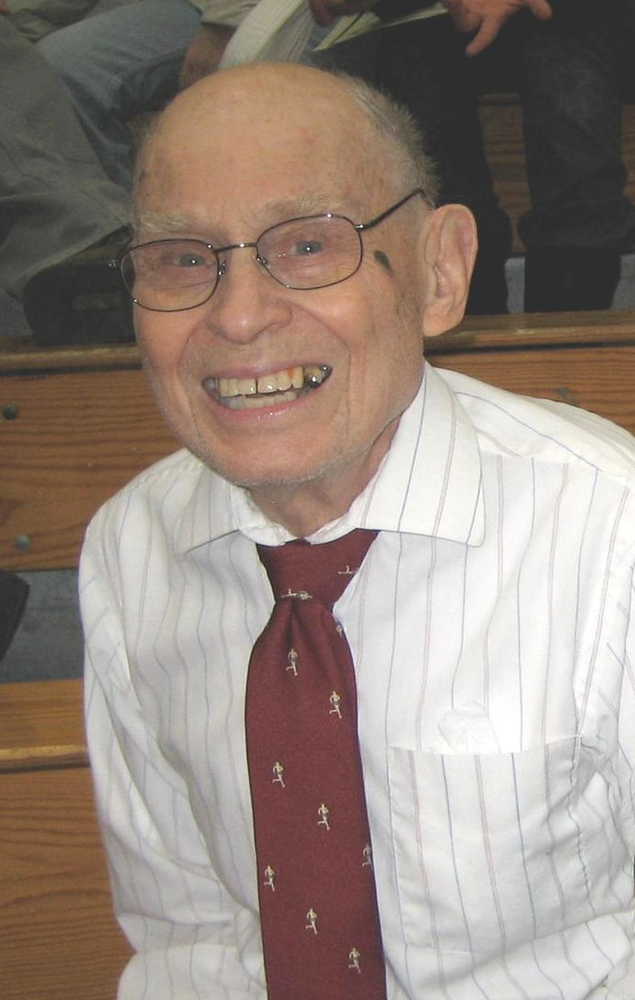
Obituary
Obituary of Stanley Richard Person
Stanley Richard Person, 91, of State College, Pennsylvania, passed away on September 18, 2019 at Juniper Village in State College from complications of Huntington's disease. He was born in Stewartsville, New Jersey on April 14, 1928, the youngest child of Russel Person and Harriet (Hauck) Person. Stan spent his childhood years working on a farm alongside his parents and siblings. He learned valuable life lessons from his parents: honesty, fairness, integrity and a commitment to helping others, especially the underprivileged. As a youth, he had a sinewy kind of toughness and played a variety of high school sports including football. Later in life, he wrestled and ran three marathons.
After serving in the Navy, Stan received his Bachelor of Science degree in Physics from Lafayette College in Easton, Pennsylvania and spent the next year working as a reactor engineer at Brookhaven National Laboratory. He started his graduate education at Yale University in 1952 and earned his doctorate in Biophysics under the direction of Fred Hutchinson in 1956. While at Yale, he met Ernest (Ernie) Pollard, a Professor of Physics, who would have a lasting impact on his career. After Yale, Stan spent six years doing post-doctoral work at the University of California at Los Angeles. In 1962, he was invited by Ernie Pollard to join the faculty in the newly formed Biophysics Department at The Pennsylvania State University. Stan spent the next 26 years at Penn State, starting as an Assistant Professor and rising through the ranks to become Professor of Biophysics and Molecular Biology in 1968.
During his initial years at Penn State, Stan's teaching and research centered on understanding the effects of radioactive decay on bacteria, the mechanisms of mutations, and how the genetic information that is stored in DNA is translated into proteins. He and his students developed clever methods to determine the DNA changes in the genomes of bacteria and bacterial viruses by mutagenic agents before powerful DNA sequencing technologies became available. Stan initiated and developed the department's undergraduate/graduate course on the Molecular Biology of the Gene and taught it for over 20 years.
In the early 1970s, Stan began studying the structure and function of biological membranes. He selected Herpes Simplex Virus as a model system for the study of membrane fusion and virus entry into host cells, which led to advances in viral genetics. His research papers were published in many prestigious journals including Science, Nature and Proceedings of the National Academy of Sciences. His research was funded by the National Science Foundation, National Institutes of Health and other government agencies.
Stan's interests and accomplishments left a deep imprint on Penn State. He was the founding director of the Industry-University Cooperative Program in Recombinant DNA Technology. In 1982, he was instrumental in starting the Summer Symposium, a university-industry consortium to develop the commercialization of new molecular biology discoveries. The program eventually became an annual summer scientific meeting and continues on to this this day. Stan helped found the university's Biotechnology Institute and served as its Associate Director. The Stanley Person Professorship of Molecular Biology and the Stanley Person Graduate Fellowship in Biochemistry and Molecular Biology were both established to honor Stan's significant contributions to the university.
After his retirement from Penn State in 1988, Stan joined his Penn State colleagues Drs. Alec Keith and Wallace Snipes at their new pharmaceutical drug delivery firm Zetachron, but soon realized that he missed biological research. In 1989, he took a position as a Visiting Professor in the laboratory of Dr. Joseph Glorioso at the University of Michigan Medical School and shortly thereafter, moved with Dr. Glorioso to the University of Pittsburgh Medical Center. There, Stan studied the mechanism by which human herpes viruses entered host cells in order to initiate viral replication. Together with Dr. Prashant Desai, Stan developed a research program to understand the formation mechanisms of capsids, the first structures formed during viral assembly that enclose and protect the viral genome.
In 1995, Stan and Dr. Desai moved to the lab of Dr. Wade Gibson at the Johns Hopkins University School of Medicine and continued their work. They made significant progress in discovering the key players in capsid assembly and the functions of a herpes virus enzyme that played an important role in it and thus was of significant interest as an antiviral target. Stan officially fully retired in 2000 but kept his hands in science for several more years.
Stan was universally loved by his students, colleagues and others he encountered. His easy-going manner and charming informality went hand-in-hand with a deep and abiding love for learning and teaching. Stan made all his students, especially those from other countries, feel welcome and at home and treated them as if they were all part of an extended family. He treated his students as equals and encouraged them to speak their mind. He loved to throw out new ideas and brainstorm, whether in a classroom or a research discussion, and was not afraid to accept ideas from his students. The students who came in contact with him learned the joys of doing science, taking chances and most of all, having fun. Stan created camaraderie within his research group, even encouraging his students to join him on group jogs through campus. For many of his former students, the time they spent in Stan's lab was transformational and they went on to achieve productive and successful careers in universities, industry and government.
In retirement and as his Huntington's progressed, Stan continued to display the good humor and kindness he had shown all his life. He greeted people with a ready laugh and smile. He enjoyed meeting new people and learning about them and their interests. He was always ready to try new things including watercolor painting and singing, with contagious enthusiasm and more success than most people would have guessed possible. He won many prizes for his watercolors at local fairs.
Stan was preceded in death by his parents; three of his four siblings, Raymond, Edith Arline and Preston; and his son Russel who was also afflicted with Huntington's disease.
Stan is survived by his wife Joanne Juhl; his brother Jack Person; his daughter Lisa (Paul) Bednarchik, son Mark (Deborah Bankson) Person and daughter-in-law Roxanne Barzona; his grandchildren Lucia Person, Robert (Becky) Rice and Timothy (Jessica) Rice; and his great grandson Leonard Rice. Stan was also greatly loved and will be sorely missed by his numerous academic children.
Burial will be private and a celebration of Stan's life will be held in the spring. No contributions or flowers are necessary. Instead, as a way of keeping Stan alive in your heart, do something thoughtful for someone - and find joy in doing it.

A Memorial Tree was planted for Stanley
We are deeply sorry for your loss ~ the staff at Koch Funeral Home
Who We Are:
Our Mission: To compassionately serve and guide families with our experience and knowledge as they honor their loved ones.
Our Location:
Koch Funeral Home
F. Glenn Fleming, Supervisor
2401 S. Atherton Street
State College, PA 16801
(814) 237-2712
(814) 238-0482 fax
admin@kochfuneralhome.com
A branch of:
John B. Brown Funeral Home, Inc.
Douglas A. Hallinan, Supervisor
417 Washington Street
Huntingdon, PA 16652
(814) 643-1256
(814) 643-1257 fax
admin@johnbbrownfuneralhome.com





